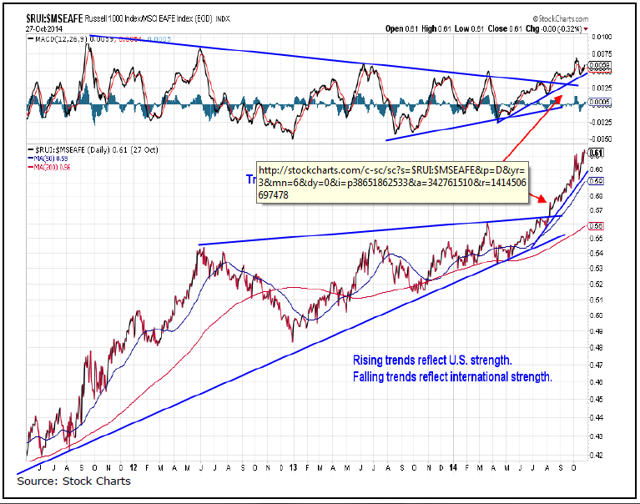GURUS VIEWS & STRATEGIES Leveraged ETFs Worst Investment Ever
Post on: 11 Апрель, 2015 No Comment

By: Howard Gold
Founder & President, GoldenEgg Investing
Like most investments that hold the promise of quick riches, geared funds seem better than they often are, and investors who buy and hold these things do so at extreme peril, writes MoneyShow.com editor-at-large Howard R. Gold .
Exchange traded funds have been a great boon to investors, offering them cheap, easy access to broad indexes and asset classes they could never invest in directly before.
So its no wonder ETFs now account for $1 trillion in investor assets.
But along with the boom have come many dubious products that allow investors to play assets like palladium, marginal currencies like the Russian ruble, and countries like Belgium and Peru.
And then there are leveraged ETFs.
Leveraged ETFs purport to give investors two or three times the return of the underlying indexes on which theyre based. Inverse leveraged ETFs let you do the same thing on the short side.
The problem is, these instruments are designed to be used as daily hedging and trading vehicles. But investors are holding them much longer than a day, which is particularly dicey in todays volatile markets.
Thats why I think these are the single worst product for individual investors Ive seen in two decades of covering markets.
There are plenty of other ways investors can hedge their portfolios with less risk, like using certain simple options strategies. Successful investing in leveraged funds requires the discipline of a computer-driven hedge fund or a steely eyed professional trader. Using them improperly is all too easy.
Because of this, I think its time for regulators to impose stricter suitability standards on these vehicles for individual investors, especially in retirement accountsand if I thought it would work, I would support banning them entirely.
Leveraged ETFs have blossomed like poison mushrooms, and now account for about $40 billion in investor assets, about half of that in inverse leveraged funds. They cover many asset classes: gold, natural gas, the eurowhat have you.
They were growing quickly until summer 2009, when the Financial Industry Regulatory Authority (FINRA) called for tighter disclosure requirements for these funds. The Securities and Exchange Commission joined FINRA in putting out a warning to investors who planned to hold them for more than a day.
Thats around when firms like UBS, Ameriprise Financial, and Bank of America Merrill Lynch limited their trading in the controversial instruments.
Indeed, according to a lawsuit filed in US District Court in Manhattan, holding leveraged ETFs over longer periods is highly unlikely to produce the results investors expect, because of these products very design.
The plaintiffs are investors in ETFs issued by ProShares Advisors, the largest provider of leveraged ETFs. (Direxion Funds and Rydex SGI are also big players, but theyre not named as defendants.) The investors are seeking class-action status, and a judge is scheduled to hear ProShares motion to dismiss the suit next week.
The suit concerns alleged lack of disclosure by the company from 2006 to 2009, when the plaintiffs claim they owned these ETFs. Ill leave that for the court to sort out, but the case is a fascinating look at how these ETFs work.
Investors who participated in this suit held shares in leveraged ETFs for days, weeks, or months, and some say they lost tens of thousands or hundreds of thousands of dollars.
In a statement, ProShares called the allegations wholly without merit. The company claimed its disclosure has always been accurate and complete and complied with all legal requirements. It vowed to defend against this suit vigorously.
Now, these investors are suing, so youd expect them to have big losses. And they bought these ETFs during the nastiest, most volatile period weve seen recently, 2008 and early 2009.
But the structure of leveraged funds makes it extremely likely that investors who hold them for more than a day will lose money, even if the market goes their way.
Why? Because leveraged ETFs use swaps, futures, and other derivatives to return two or three times the underlying index (or two or three times opposite that indexs movements) on a daily basis.
NEXT: Daily Rebalancing, Long-Term Pain














